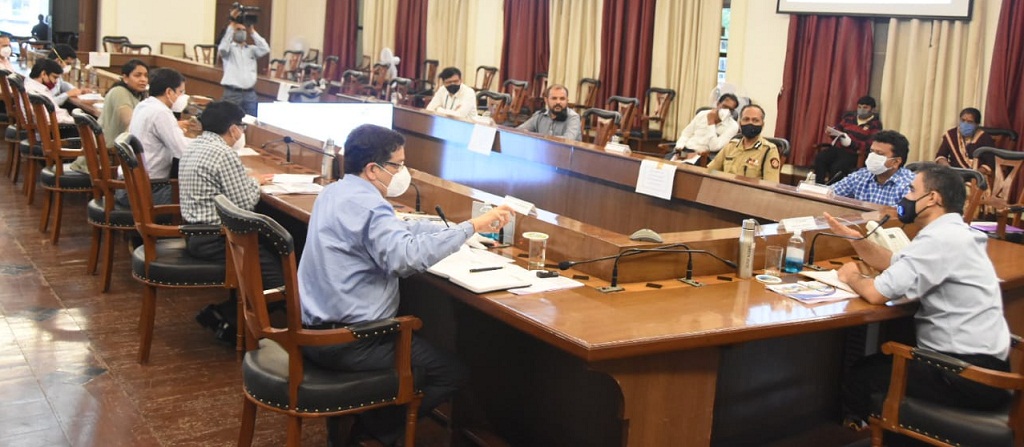Epidemics which changed the course of history before Coronavirus

Shikha Chaurasia
Pune, June 6, 2020: The spreading of infectious disease on a large scale in a community or a place at a particular time is known as an epidemic. The most recent occurrence, which is still ongoing and has affected people worldwide is the virus outbreak of the Novel Coronavirus. Throughout history, there have been many plagues, virus and disease outbreaks which have ravaged the world and its inhabitants. The timeline goes back to the 1300s when there was not much medical knowledge and scientific help. Because there were no cures, vaccines and knowledge, people did not know how to fight these epidemics and there were major outbreaks and plagues which changed the demography of the world and wiped out a huge section of the population.
These are the major epidemics and plagues in chronological order which has affected mankind from all walks of life-
1) Black Death (Bubonic Plague): It happened around 1347-1351 and was so massive that it gripped the entire belt of Europe and Asia. It also spread to North Africa and was soon labelled as a pandemic. It was the most fatal plague ever recorded in human history. The death toll of the plague amounted to an estimate of 200 million and it is believed that it may have reduced the world’s population from an estimated 475 million to 350-375 million in the 14th century.
Cause: It is caused by the bacteria Yersinia pestis.
Transmission: It can spread through contact with infected fleas. It enters the body through animal or insect bites and stings.
Symptoms: Swollen lymph nodes, which can be as large as chicken eggs, in the groin, armpit or neck. Others include fever, chills, headache, fatigue and muscle aches.
Treatment: During the 14th century there was no proper medication or treatment for this bacterial disease but later on when discoveries of antibiotics were made this could be treated with strong antibiotics while critical cases need emergency care and hospitalization.
2) Smallpox: This pandemic happened in the 1520s and was caused due to a virus known as Variola major and Variola minor. Smallpox is now eradicated and does not exist in our society. The last active case was in 1977 and 1980 it was declared as ‘globally eradicated’ by the WHO. Its death toll was massive and it has been estimated that smallpox has killed around 500 million people in the 100 years of its existence.
Cause: It is caused due to the virus, Variola Major and Variola Minor. Variola Major is far more fatal than Variola Minor.
Transmission: Airborne respiratory droplets (coughs or sneezes).
By saliva (kissing or shared drinks).
By skin-to-skin contact (handshakes or hugs).
By blood products (unclean needles or unscreened blood).
By touching a contaminated surface.
Symptoms: Small rashes, bumps, blisters, scabs. People also experience fever, chills, malaise, vomiting, headaches and other flu-like symptoms. Blindness was also reported in patients of smallpox. It also caused scarring and disfigurement.
Treatment: There’s no treatment or cure for smallpox. A vaccine can prevent it, but the vaccine’s side effect risk is too high. Edward Jenner found the vaccine for smallpox in 1796.
3) Spanish Flu: The Spanish Flu occurred in 1918 and soon became a pandemic. It was an influenza pandemic and was caused due to the H1N1 influenza A virus. It is estimated that around 500 million people were affected by it, which almost amounts to the third of the world’s population at that time. The death toll was massive and it killed around 17-15 million people or more. Some people argue that the death toll was possibly around 100 million. It is known as one of the most deadly pandemics of human history.
Cause: H1N1 A influenza virus was the cause of the Spanish Flu.
Transmission: The flu virus was highly contagious and when an affected person sneezes, talks or coughs the respiratory droplets of the person were inhaled by others and that’s how it spread. One of the major reasons for transmission was the lack of quarantine during that time.
Symptoms: Fever, cough, sore throat, chills were a few symptoms of the flu.
Treatments: During that time there were no effective antiviral drugs or vaccines so people could not receive effective treatment. The first licensed flu vaccines came in America in the 1940s.
4) Ebola Virus Disease: It was first discovered near the Ebola River in 1976 which is now known as the Democratic Republic of Congo. It has mostly affected people in African countries. Later in 2013-2016 it reached an epidemic state and started spreading to other countries. The number of cases in other countries was very less. Its death toll is said to be around 11,323.
Cause: Scientists believe that the Ebola virus is caused when a human comes in contact with an infected animal such as a fruit bat or nonhuman primates.
Transmission: The spread of Ebola is caused when a person comes in direct contact with blood or body fluids, contaminated objects, infected fruit bats, monkeys, apes also from the semen of the person who has EVD.
Symptoms: Red eyes, skin rash, fever, severe aches in the stomach, head, muscle or joint pain.
Weakness, unexplained haemorrhaging, bleeding or bruising.
Gastrointestinal symptoms include vomiting and diarrhoea.
Treatments: Hand washing, sanitizing are the most basic way to prevent from getting the virus. There is currently no antiviral drug to treat Ebola but there are other treatments to save a person from dying. Providing fluids and electrolytes through infusion into the vein, offering oxygen therapy to maintain oxygen status, using medication to support blood pressure, reduce vomiting and diarrhoea and to manage fever and pain, treating other infections, if they occur.
5) Coronavirus: The Coronavirus pandemic is also known as the Covid-19 pandemic because it originated in December 2019 in Wuhan, China and after that it spread across the whole world. It is still ongoing and globally it has affected 6.42 million people and the death toll is 3, 83,000 people around the globe. It is an infectious disease and spreads rapidly if an affected person comes in contact with others.
Causes: It is caused due to the severe acute respiratory syndrome coronavirus 2 (SARS-Cov-2) and is contagious.
Transmission: It is transmitted when an infected person sneezes or coughs and the droplets land on surfaces and a person comes in contact with it. It can also spread if a person is in close proximity from an affected person and inhales the virus or touches the contaminated surfaces and then touches the eyes, nose or mouth.
Symptoms: The most common symptoms are dry cough, tiredness and fever.
Less common symptoms are sore throat, diarrhea, and nasal congestion, discolouration of fingers or toes, headaches, conjunctivitis, loss of taste or smell.
Treatment: There is no vaccine as of yet for Covid-19 but, the process of making and finding a vaccine is under process. Around 80% of the people recover from the disease without any serious treatments while 20% become gravely ill. The risk is higher for old, diabetic and blood pressure patients to catch Covid-19 and become ill.
These were some of the pandemics which have wreaked havoc on the world and changed the scenario of the society forever. But, the mankind soon learns and the body naturally learns to adapt to these adverse conditions. It gives a lesson that how a micro-organism like a bacteria or a virus could make the entire human race bend on its knees. Therefore, we must keep in mind the safety of us and others and keep our surroundings clean and healthy and not contaminate the environment we live in.





